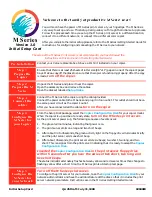
Glossary
GL-2
CLI Reference Guide for the Cisco Secure Access Control System 5.1
OL-18996-01
D
DNS
Domain Name System. DNS associates various sorts of information with so-called domain names; most
importantly, it serves as the “phone book” for the Internet: it translates human-readable computer
hostnames (for example,
en.wikipedia.org
) into the IP addresses that networking equipment needs for
delivering information. It also stores other information, such as the list of mail exchange servers that
accept e-mail for a given domain. In providing a worldwide keyword-based redirection service, the
DNS is an essential component of contemporary Internet use.
DNS name
Initial name of a node.
domain name
The style of identifier—a sequence of case-insensitive ASCII labels separated by dots (.) (for example,
bbn.com.
)—defined for subtrees in the Internet DNS [R1034] and used in other Internet identifiers,
such as hostnames, mailbox names, and URLs.
Domain Name
System
See
DNS.
F
FTP
File Transfer Protocol. Application protocol, part of the TCP/IP protocol stack, used for transferring
files between network nodes. FTP is defined in RFC 959.
H
host
Computer system on a network. Similar to the term node; except, that host usually implies a computer
system, whereas node generally applies to any network system, including access servers and ITPs.
hostname
The name of the operating system’s server or computer that contains the major program files.
I
IP
Internet Protocol. Network layer protocol in the TCP/IP stack offering a connectionless internetwork
service. IP provides features for addressing, type-of-service specification, fragmentation and
reassembly, and security. Documented in RFC 791.
IP address
32-bit address assigned to hosts by using TCP/IP. An IP address belongs to one of five classes (A, B,
C, D, or E) and written as 4 octets separated by periods (.) (dotted-decimal format). Each address
consists of a network number, an optional subnetwork number, and a host number. For routing, the
network and subnetwork numbers stay together, while the host number addresses an individual host
within the network or subnetwork. A subnet mask extracts network and subnetwork information from
the IP address.









































